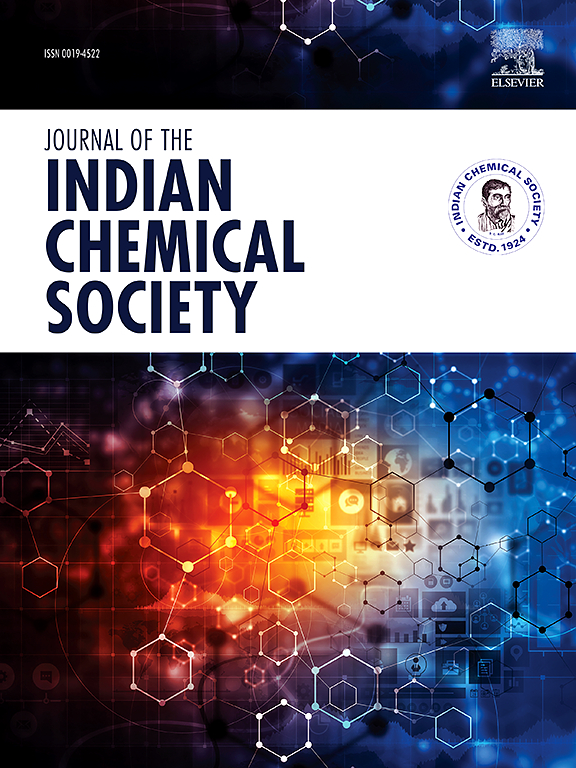Enhanced photocatalytic activity of Ce1-xMnxO2-δ nanoparticles and MC-Ce0.91Mn0.09O2-δ nanocomposite prepared from Chalcas koenigii stem for UV-induced degradation of methyl orange
IF 3.2
4区 化学
Q2 CHEMISTRY, MULTIDISCIPLINARY
引用次数: 0
Abstract
This study thoroughly examines the synthesis and characterization of Ce1-xMnxO2-δ nanoparticles (NPs) and their magnetic biochar-Ce0.91Mn0.09O2-δ (MC-Ce0.91Mn0.09O2-δ) nanocomposite (NC). The materials are further explored for their efficiency in degrading methyl orange (MO) through photocatalysis. The MC-Ce0.91Mn0.09O2-δ is produced by carbonizing Chalcas koenigii (curry leaf) stem powder using Fe2O3 precursor. The crystallite sizes decrease with increase in Mn-doping concentration and also with the addition of magnetic biochar into the Ce0.91Mn0.09O2-δ NPs matrix. XPS provides insights into the surface chemical composition and valence states of MC-Ce0.91Mn0.09O2-δ NC. The surface area enhances with doping concentration and on loading MC. The bandgap energy decreases with an increase in Mn-doping concentration and also with the incorporation of MC. From the photocatalytic degradation study of MO under UV light, the catalysts (Ce1-xMnxO2-δ, MC-Ce0.91Mn0.09O2-δ) show 5 ppm concentration of MO at pH 4 as the optimum condition for the degradation. The as-synthesized materials demonstrate excellent reusability and stability, highlighting their potential for wastewater treatment.

增强了Chalcas koenigii茎制备的Ce1-xMnxO2-δ纳米颗粒和MC-Ce0.91Mn0.09O2-δ纳米复合材料光催化降解甲基橙的活性
本文研究了Ce1-xMnxO2-δ纳米粒子(NPs)及其磁性生物炭- ce0.91 mn0.09 o2 -δ (MC-Ce0.91Mn0.09O2-δ)纳米复合材料(NC)的合成和表征。进一步探讨了这些材料光催化降解甲基橙(MO)的效率。MC-Ce0.91Mn0.09O2-δ是用Fe2O3前驱体碳化咖喱叶茎粉制备的。随着mn掺杂浓度的增加,以及在Ce0.91Mn0.09O2-δ NPs基体中加入磁性生物炭,晶粒尺寸减小。XPS提供了MC-Ce0.91Mn0.09O2-δ NC的表面化学组成和价态的见解。在紫外光下对MO的光催化降解研究中,Ce1-xMnxO2-δ、MC- ce0.91 mn0.09 o2 -δ、MO的浓度为5ppm, pH为4时,MO的最佳降解条件为Ce1-xMnxO2-δ。合成材料表现出优异的可重复使用性和稳定性,突出了它们在废水处理方面的潜力。
本文章由计算机程序翻译,如有差异,请以英文原文为准。
求助全文
约1分钟内获得全文
求助全文
来源期刊
CiteScore
3.50
自引率
7.70%
发文量
492
审稿时长
3-8 weeks
期刊介绍:
The Journal of the Indian Chemical Society publishes original, fundamental, theorical, experimental research work of highest quality in all areas of chemistry, biochemistry, medicinal chemistry, electrochemistry, agrochemistry, chemical engineering and technology, food chemistry, environmental chemistry, etc.

 求助内容:
求助内容: 应助结果提醒方式:
应助结果提醒方式:


